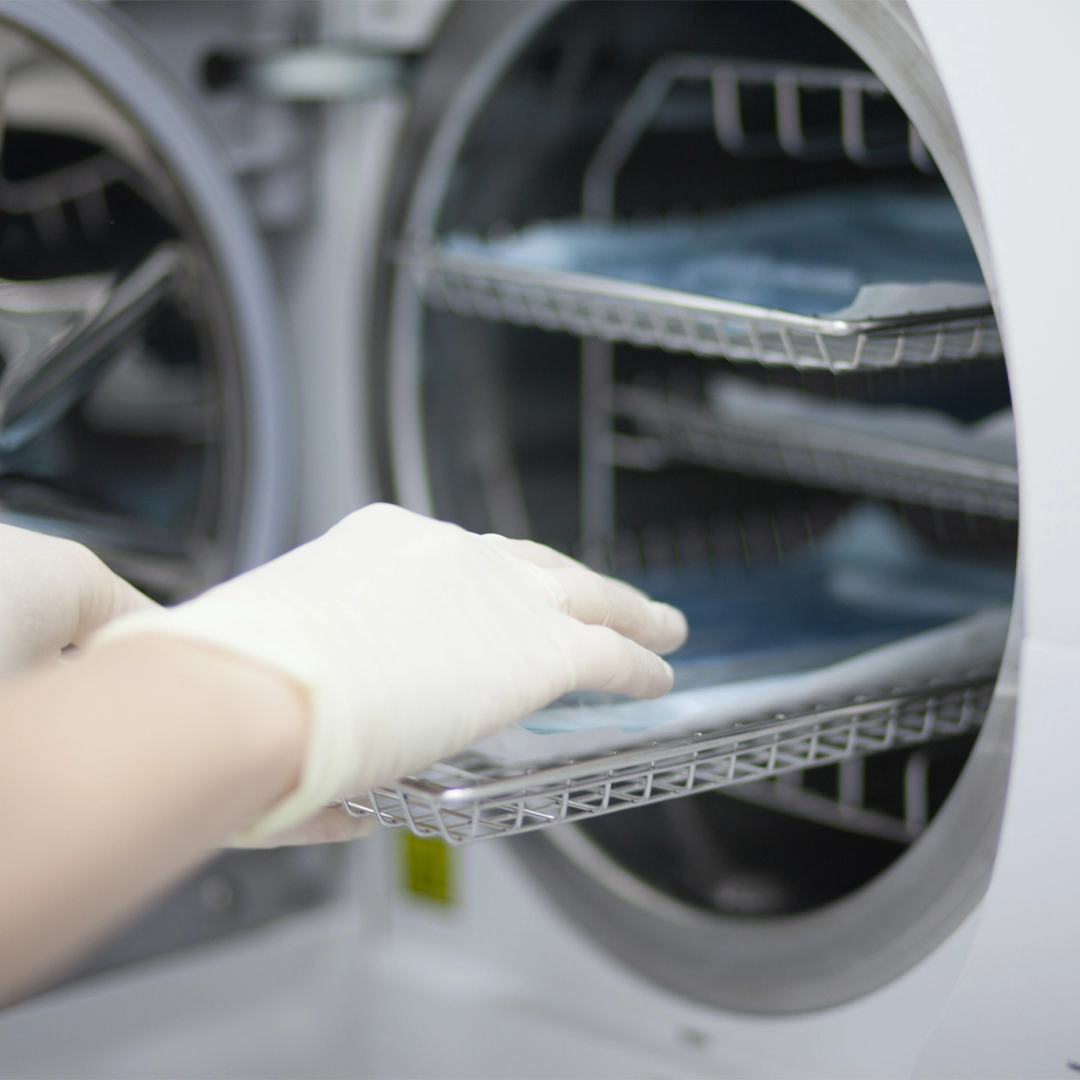Empowering the Next Generation: The Impact and Importance of Sterile Processing Educators
Empowering the Next Generation: The Impact and Importance of Sterile Processing Educators
Sterile processing plays a vital role in healthcare, ensuring that medical instruments and equipment are thoroughly cleaned, sterilized, and maintained. It is a critical function that directly impacts patient safety and the overall effectiveness of healthcare facilities. In recent years, there has been a growing recognition of the importance of sterile processing education and the role of educators in shaping the next generation of professionals in this field.

Table of Contents
Understanding Sterile Processing: A Brief Overview
Sterile processing is a complex and multi-faceted discipline that encompasses various processes and procedures. Its primary goal is to prevent the spread of infections and maintain the sterility of medical equipment. Sterile processing professionals are responsible for cleaning, decontaminating, assembling, and sterilizing instruments and equipment used in medical procedures.
Without proper sterile processing, healthcare facilities are at risk of transmitting infections and compromising patient safety. This is why the role of sterile processing educators is crucial in ensuring that professionals in this field are well-equipped with the necessary knowledge and skills.
The Role of Sterile Processing in Healthcare
In addition to preventing infections, sterile processing also plays a vital role in supporting various medical procedures. Whether it is surgery, emergency care, or routine diagnostics, healthcare professionals rely on sterile instruments and equipment to carry out their work effectively. Without sterile processing, these procedures would not be possible.
Furthermore, sterile processing is an integral part of regulatory compliance. Healthcare facilities must adhere to strict standards and guidelines to ensure patient safety and meet regulatory requirements. Educators in this field play a crucial role in imparting this knowledge to aspiring sterile processing professionals.
Key Components of Sterile Processing
Sterile processing involves several key components, including cleaning, decontamination, assembly, and sterilization.
Cleaning: The initial step in sterile processing involves thoroughly cleaning instruments and equipment to remove any organic matter, debris, or microorganisms. This is typically done through manual cleaning or the use of automated cleaning machines.
Decontamination: Once the cleaning process is complete, instruments and equipment undergo decontamination to eliminate any remaining microorganisms. This can be accomplished through various methods, such as chemical disinfection or sterilization.
Assembly: After decontamination, sterile processing professionals carefully assemble instruments and equipment, ensuring that all components are in place and functioning properly.
Sterilization: The final step involves sterilizing instruments and equipment to eliminate any remaining microorganisms. Sterilization methods can include steam, ethylene oxide gas, or hydrogen peroxide plasma.
Each component is critical, and educators play a pivotal role in teaching the best practices and ensuring that sterile processing professionals understand the importance of each step.
Moreover, sterile processing professionals must also be knowledgeable about infection control practices and the latest advancements in medical technology. They need to stay updated on emerging pathogens, new sterilization techniques, and changes in regulatory requirements. This continuous learning ensures that they can adapt to evolving healthcare needs and maintain the highest standards of patient safety.
Additionally, sterile processing professionals work closely with other healthcare professionals, such as surgeons, nurses, and infection control specialists. Effective communication and collaboration are essential to ensure that all parties are aligned in their efforts to maintain a sterile environment and prevent healthcare-associated infections.
The Influence of Sterile Processing Educators
Sterile processing educators have a significant impact on shaping the future of this field. Through their expertise and guidance, they empower the next generation of professionals, enabling them to carry out their roles effectively and with a strong focus on patient safety and care.
Shaping the Future of Sterile Processing
Educators in this field can shape the future of sterile processing by instilling the necessary knowledge, skills, and values in their students. They not only teach the technical aspects of the job but also emphasize the importance of ethics, professionalism, and continuous improvement.
With their extensive experience and deep understanding of the field, educators are able to provide students with valuable insights into the latest advancements in sterile processing. They keep themselves updated with the latest research and industry trends, ensuring that their students are equipped with the most relevant and innovative knowledge.
By taking a consultative approach and encouraging critical thinking, educators foster a culture of innovation and problem-solving amongst their students. This ensures that the sterile processing professionals of tomorrow are well-prepared to tackle the evolving challenges and demands of the healthcare industry.
The Power of Effective Education
Effective education is essential in every profession, and sterile processing is no exception. Educators play a crucial role in equipping students with the knowledge and skills needed to excel in this field. Through engaging teaching methods, hands-on training, and real-world case studies, educators create an environment that promotes active learning and professional growth.
This is especially important in the field of sterile processing as one must be familiar with many standards and guidelines that are often relatively lengthy (Prust, J., 2024).
Moreover, educators understand the importance of continuous learning and professional development. They encourage their students to pursue certifications and attend conferences and workshops to stay updated with the latest advancements in sterile processing. By fostering a culture of lifelong learning, educators ensure that their students are well-prepared to adapt to the ever-changing landscape of healthcare.
Furthermore, educators serve as mentors and advisors, guiding students throughout their educational journey and beyond. They provide valuable insights, share experiences, and offer career guidance, helping students develop a strong foundation for their future careers in sterile processing. Whether it’s assisting with job placement or providing ongoing support, educators are committed to the success of their students even after they graduate.
The Impact of Sterile Processing Education on Healthcare
The impact of sterile processing education extends well beyond the classroom. It has far-reaching implications for patient safety, healthcare efficiency, and regulatory compliance.
Improving Patient Safety and Care
Proper sterile processing is essential for preventing healthcare-associated infections (HAIs) and protecting patients from preventable harm. Educated sterile processing professionals are better equipped to follow rigorous protocols, ensure proper cleaning and sterilization, and identify potential risks or deviations from best practices.
By emphasizing the importance of infection control and adherence to standards, educators contribute to a culture of patient safety. Their efforts ultimately improve the quality of care provided to patients, reducing the risk of complications and the spread of infections.
Enhancing Efficiency in Healthcare Facilities
Efficiency is a critical factor in healthcare, allowing facilities to provide timely and effective care to patients. Educated sterile processing professionals understand the importance of efficient workflows, proper equipment management, and effective communication with healthcare providers.
Through education, professionals in this field learn how to optimize processes and streamline workflows, resulting in improved efficiency and productivity. This, in turn, contributes to shorter turnaround times for instrument preparation and availability, supporting the overall efficiency of healthcare facilities.
Moreover, the impact of sterile processing education on healthcare extends to resource management. Educated professionals are trained to identify and implement cost-effective strategies that maximize the utilization of resources while maintaining quality standards. They learn how to assess the needs of the healthcare facility and make informed decisions regarding the procurement and allocation of supplies and equipment.
Additionally, sterile processing education plays a crucial role in regulatory compliance. Educated professionals are well-versed in the latest guidelines and regulations set forth by governing bodies such as the Centers for Disease Control and Prevention (CDC) and the Occupational Safety and Health Administration (OSHA). They understand the importance of documentation, record-keeping, and regular audits to ensure compliance with these standards.
By staying up to date with regulatory requirements, educated sterile processing professionals help healthcare facilities avoid penalties, legal issues, and reputational damage. Their knowledge and adherence to regulations also contribute to the overall trust and confidence that patients and healthcare providers have in the facility’s commitment to safety and quality.
Challenges and Opportunities in Sterile Processing Education
While the importance of sterile processing education cannot be overstated, there are challenges that need to be addressed to ensure its continued effectiveness.
Addressing the Gap in Sterile Processing Knowledge
One of the significant challenges in sterile processing education is addressing the gap in knowledge among healthcare professionals. Many healthcare providers lack a thorough understanding of sterile processing and its role in patient safety.
Educators can bridge this gap by raising awareness and providing targeted education to healthcare providers. By fostering collaboration and interdisciplinary learning, educators can help healthcare professionals gain a deeper appreciation for sterile processing and work together towards a common goal of patient safety.
Harnessing Technology for Better Education
In today’s digital age, technology offers numerous opportunities to enhance sterile processing education. From virtual simulations to interactive online courses, technology can provide a more immersive and accessible learning experience for students.
Educators should embrace these technological advancements and incorporate them into their teaching methods. By harnessing technology, educators can create engaging and interactive learning environments that prepare students for the challenges and advancements in sterile processing.
The Future of Sterile Processing Education
The field of sterile processing is continually evolving, driven by emerging trends and technological advancements. Educators must adapt to these changes and prepare students to thrive in the future healthcare landscape.
Preparing for Emerging Trends and Technologies
Modern technologies, such as automation and robotics, are revolutionizing the field of sterile processing. Educators must stay abreast of these developments and integrate them into their curriculum to prepare students for the future.
By familiarizing students with emerging trends and technologies, educators empower them to embrace change, adapt to new practices, and contribute to continuous improvement in sterile processing.
The Role of Continuous Learning in Sterile Processing
Continuous learning is essential in any field, and sterile processing is no different. Educators should instill a passion for lifelong learning in their students, emphasizing the importance of staying updated with industry advancements, regulatory changes, and best practices.
By fostering a culture of continuous learning, educators ensure that students are equipped with the skills and mindset necessary to thrive in an ever-changing healthcare landscape.
In summary, the impact and importance of sterile processing educators cannot be overstated. They play a crucial role in shaping the next generation of professionals and ensuring that healthcare facilities maintain the highest standards of patient safety and care. By imparting knowledge, instilling values, and embracing emerging trends, educators empower students to make a meaningful impact in the field of sterile processing for years to come.
Join the Vanguard of Sterile Processing with Hunter Recruiting
As you consider the profound impact of sterile processing educators and the importance of continuous learning in healthcare, take the next step in your career with Hunter Recruiting. We are dedicated to connecting passionate professionals like you with meaningful opportunities in healthcare. If you’re ready to contribute to patient safety and care in a role that values your expertise, find your next job with us and join the ranks of leaders in the industry.
Need help finding a job?
Hunter is the best way to find a job.
Click Here






